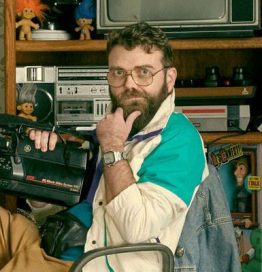What went wrong with this Pokémon Go article?
The problem with opinions, as they say, is that everyone has one. What went wrong Pokémon Go? Ashley Ringrose reveals lessons from a heavily borrowed and insight free article in this guest post.
What motivates someone with little practical knowledge on a particular subject to write about it?
What went wrong with this Pokémon Go article? Lessons from this heavily borrowed and insight free article.
What motivates someone, with little practical knowledge on a subject, to feel the urge to write about something? Also looking at you another Mark who confused Nintendo’s profit for market capitalisation (no excuse for someone with an MBA in marketing) amongst other things in his “real” lessons from Pokémon Go.



I want Oreos now.
Mike drop
B-b-but Mark Ritson assured me that digital was worthless and print was the future?!?!?
Ironic that a guest post poking holes at another guest post is equally riddled with inaccuracies and ill-researched facts.
Tracking wasn’t removed because of “hacking”. There hasn’t even been an official reason why it’s been removed. The “hacking” stemmed from the API, which as of 2 weeks ago has been closed off, resulting in the disruption in tracking maps/scanners and bots.
Also, there’s a working tracking system currently in San Francisco.
The gym system has also recently been updated to give lower level players more access. While it’s still challenging for newbies to attack gyms, they can now contribute by levelling up friendly gyms. All friendly training battles have Pokemon levels scaled down to the player’s levels.
Also, the battle system is designed to favour attackers. Given enough resources and persistence, any player can easily take down opposing gyms.
Unless you never made it past level 10, I don’t see how you could have issues doing gym battles.
Ironic that a comment poking holes at a guest post poking holes at a guest post could be so riddled with inaccuracies.
Tracking was removed because 3rd parties were accessing the API and publishing the GPS locations of the Pokemon on various websites. Combine this with the use of mobile emulators and GPS spoofers, and you could easily catch 100 new Pokemon in a few hours from the comfort of your computer chair if you wanted, as well as teleport to any gym you felt like taking over. This was obviously a game breaking advantage. Couple that with the huge amount of strain the constant 3rd party location pings were putting on the GO servers, and you can see why they disabled tracking.
The gym battles were broken and buggy from launch and for a few weeks post launch, at which point a lot of the player base had lost interest since most of the gyms in urban areas were too powerful, and spending 2 hours tapping the screen to reduce the hold of another teams gym is hardly anyone’s idea of fun. The dodge mechanic also didn’t even work making the battles even more shallow.
I’m pleased there’s a working tracking system in San Fransisco, that’s very reassuring for the 99% of the player base who don’t live there.
Ummm… people could still GPS Spoof/snipe/get exact locations of Pokemon through Fast Pokemap, pokemongo-map and countless other apps/programs without the three step tracker. This only ended early this month when they introduced Captchas and killed the 0.35 API.
GPS spoofing is also still well and truly alive.
Gym battles not working/buggy? Yeah, nah. I find it hard to believe that I’d be at 4000+ battles if they weren’t working. Sure, there’s the occasional error that locks you out for 10 minutes if your GPS drifts but it’s hardly game-breaking.
Dodging not working? Dodging has actually been nerfed ever since they changed the system so that it reduces 75% of damage as opposed to 100%.
When the game play is this shallow all those changes have come too late to sustain the enormous initial player base.
By year’s end it’ll only be the hardcore players like yourself playing. Everyone else will have moved on to the next fad (hopefully this one doesn’t drain the battery with two hours of game play)
Boom
Could Niantic have stopped the attack on their servers without changing the API? I tot they did that.
Very interesting article, we are a dedicated digital agency company helping small businesses grow online. We have a very simple and interesting article on pokemon go. Hope you all find it useful. http://bit.ly/PoKeMoNGo1
Hey Jay
Tracking was removed because… they havent announced a reason because “Our servers cant handle the API calls and we dont want people to cheat/hack” sends a bad message.
And if you have battled in 4000+ battles then you are the hardcore player who enjoy it while me Mr Casual as Pokemon Go just get’s smashed or feel like my contribution is like a grain of sand. My point was this was a fail to me of the game design.
But hey everything else was cool in my “riddled” piece!
hey ash, well done on the article, its clear you know your stuff.
However, next time, try and respond with a bit more class and maturity, you do yourself no favours being so aggressive and smug sounding.